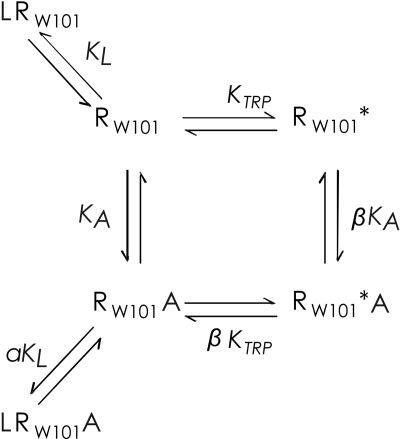Fig. 6.
Trp-flip mechanism showing the equilibrium between the ground state of the receptor (RW101) and a state in which the side chain of Trp101 has undergone conformational isomerization (RW101*). A represents AC-42 or 77-LH-28-1, and L represents a nonselective orthosteric antagonist, such as NMS. The RW101*A state of the receptor is proposed to have signaling activity, whereas the RW101A state is inactive, in the case of AC-42 and 77-LH-28-1. LRW101A represents the formation of a (signaling-inactive) ternary complex between the orthosteric antagonist and the NSA.

